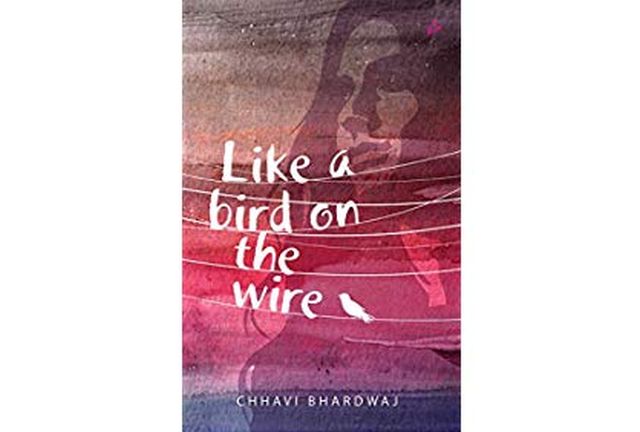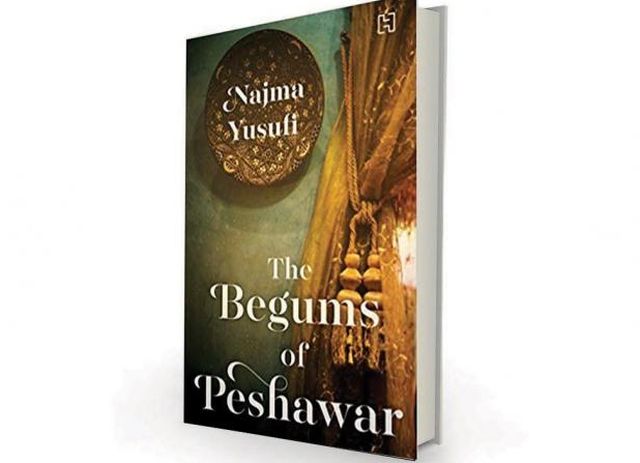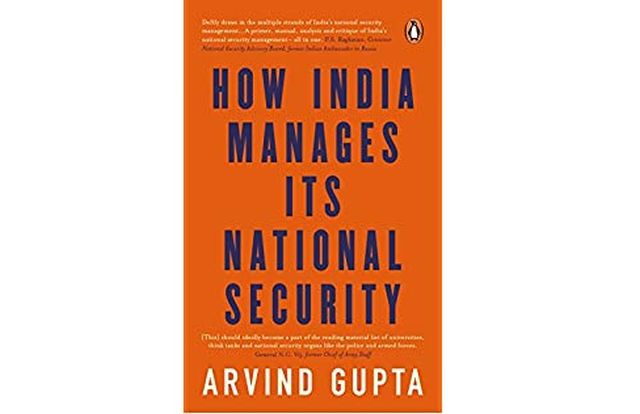
by Editor | May 25, 2021 | Books
 By M.R. Narayan Swamy,
By M.R. Narayan Swamy,
Title: The Wily Agent/The Zero Cost Mission; Author: Amar Bhushan; Publisher: HarperCollins India; Pages: 189; Price: Rs 250.
Spymaster Amar Bhushan’s first book, “Escape to Nowhere”, based on the defection of a senior RAW officer to the US, was so racy that I still rate it as the best work of fiction I have read after the celebrated “The Day of the Jackal”. A gifted writer, Bhushan has now come with a two-story fictional work based on the exploits of the Indian intelligence in Bangladesh that is simply unputdownable.
A Bangladeshi diplomat who was on the payroll of RAW in New Zealand is transferred back to Dhaka where he decides to continue his relationship, for monetary considerations of course, with the Indian intelligence. But he runs into RAW bureaucracy until an officer who realises his potential steps in.
What follows is drama at its best as the Bangladeshi, not new to the world of spying, not only piles one classified document after another in the hands of a startled RAW but also introduces the Indians to others in the government ready to spy. The merry game goes on until the Bangladeshi counter-intelligence gets wise and the traitor is caught, jailed, tortured and sacked. A grateful Indian intelligence quietly funds his family so that they don’t starve and is also able to fight the arrested man’s legal battle.
“The Zero Cost Mission” is the account of an audacious RAW operative who requests a Kolkata-based, politically well-connected Bangladeshi to finance an operation (because RAW is not ready to give him the money he wants) that will involve targeting the anti-India Jamaat-e-Islami and its patron, the Pakistani intelligence. The Indians know that the Jamaat and the Inter-Services Intelligence (ISI) of Pakistan are using madrassas that have sprouted along the Indo-Bangladesh border to infiltrate terrorists into India. And the Jamaat is not willing to mend its ways despite polite requests.
After just one visit to Dhaka, the RAW operative executes a deadly plan that startles even his seniors as bomb attacks take place on Jamaat offices and madrassas (used as launching pads to infiltrate terrorists) in Dhaka and elsewhere. An ISI safe house in Dhaka is also bombed. The Awami League, when it comes to power, cracks down hard and hangs the Jamaat leader. And in what may not be a coincidence, those who had been jailed by the Nationalists but helped the RAW operative financially get rehabilitated.
But this book is not just about two successful Indian operations in Bangladesh which the author says are inspired by true stories. The book also exposes the rot in RAW as incompetent seniors try to throttle the more energetic juniors out of sheer jealousy. Thus, the operative who took on the Jamaat and ISI in Bangladesh is brazenly overlooked for promotion by those who resent his achievements. But he silently bears the pain and humiliation. There are those who don’t mind ruining the career of those they can. To keep the bosses on the right side, some prefer to silently suffer humiliation. Others are made of sterner stuff.
(M.R. Narayan Swamy can be reached on narayan.swamy@ians.in)
—IANS

by Editor | May 25, 2021 | Books
 By Sheikh Qayoom,
By Sheikh Qayoom,
Book: Aryabhata Clan; Author: Sudipto Das; Publisher: Niyogi Books; Price: Rs 595; Pages: 476
Spread across four parts, the narrative of Sudipto Das’ second book, “Aryabhata Clan”, starts like a typical crime thriller with the kidnapping of the protagonist, Kubha.
The book provides evidence that tackling sensitive and complicated topic like “Islamic terrorism” has its inherent risks. It is universally accepted that terrorism has no religion and yet the adrenaline triggered recourse to religion by Shamsur Ali, the terror mastermind of the book, would have us believe that the thick line between religion and terrorism does not exist.
Had the author, an alumnus of IIT-Kharagpur, not amplified the canvas of his narrative to encompass “Islamic terrorism”, we surely would have a plot for another James Bond blockbuster, what with all the international intrigues, and the beach volley played between India’s RAW and Pakistan’s ISI,
The oft repeated, misplaced references to the history of Islam by the terrorists can, however, act like a double edged sword in the book at hand.
“Rape can work like a dope for depraved young people wishing to exert their manhood, that too in a way approved by Islam,” asserts Shamsur Ali to Kubha, the hostage picked up by the terrorists from JNU, showing the levels of perversion to which a sick mind can stoop.
Kubha, however, wonders at the irony that the place where she is raped again and again is called the “Eight Heavens” by her abductors. Invoking the holy Battle of Badr led by the Prophet of Islam, the indoctrination of the terror recruits is done by reference to Islamic history.
Proving beyond doubt that his terror mastermind is no humble follower of any religion, the author’s “iconic Bangladeshi professor of death and destruction” does not hide his hatred for other religions as well.
“Jesus had spent a good amount of his growing years in Kashmir studying Buddhism. Many of the teachings of Jesus had surreptitious similarities with that of the Buddhism. If we want to eliminate all traces of Hinduism and Buddhism from the earth, we can’t spare Christianity.”
Gory, frightening and lunatic, the terror protagonist of the author will make you tremble at the sheer thought of waging a brutal war against the world in the name of fighting for peace.
It is precisely because of this realisation that an army general in Mardan tells Parush, the Aryabhata Clan’s superhero against terrorism: “Not the time for beach volley between the RAW and the ISI. You can give a press release blaming the murder on RAW and we can blame the ISI. But, do you realise that someone is fooling both the RAW and the ISI?”
The author takes the reader on a roller coaster ride to Sri Lanka, Bangladesh, Pakistan and to the motifs of Khushawari rugs. Finally, Shamsur Ali is hunted down by Parush and Rahul, the terror fighters of the Aryabhata Clan.
As to where and how the final battle between peace and terror would be fought, the author has few answers. Sadly perhaps, the words of Kubha sum up the spirit of the narrative: “There would be more Kubhas like me. There would be many more Aryabhata Clans like ours. We will not allow any apocalypse to happen anywhere in the world, in life and in death.”
Sudipto Das has done well to portray the design that emerges as terrorists plot to strike innocent people in the world. A word of caution must be added to the oft-repeated reference to Islam and its history by the terror pushers in “Aryabhata Clan”.
Islam has as little to do with terrorism as any other religion we follow. In fact, the narrative proves that the first victim of the terrorists’ plan is the religion they claim to follow.
(Sheikh Qayoom can be contacted at sheikh.abdul@ians.in)
—IANS

by Editor | May 25, 2021 | Books
 By Mayabhushan Nagvenkar,
By Mayabhushan Nagvenkar,
Book: Like a Bird on the Wire; Author: Chhavi Bhardwaj; Publisher: Amaryllis; Pages: 327; Price: Rs. 399
If 1983 batch Indian Administrative Service (IAS) officer Upamanyu Chatterjee’s “English, August” gave readers a slick English-speaking young bureaucrat, floundering and trying to make sense of the classic city-village conflict, Chhavi Bhardwaj, a 2008 batch officer of the Madhya Pradesh cadre, in her book “Like a Bird on the Wire” tells us a story about two young IAS officers trying to make sense of themselves and the profession they have chosen to be in.
Bhardwaj’s two protagonists are Avinash Rathore — a go-getter, dapper, efficient, a picture-perfect manifestation of a “successful” young officer; and Nethra Kaul, Rathore’s batchmate and former lover, who despite her skill and talent, has self-doubts about her job in particular and her life in general.
The book opens with a tentative message from Kaul to Rathore after she comes across a photograph of the dapper officer winning the “PM’s Excellence Award” on the occasion of Civil Services Day, which the author, wittily describes as the equivalent of the Oscars for IAS officers.
Kaul’s congratulatory message is the first outreach between the two after they parted ways seven years before, following their dalliance at the Lal Bahadur Shastri National Academy of Administration, and sets the tone for the plot.
While Rathore is the “rockstar” officer and a “happy” family man, Kaul is unmarried, considers herself banished to bureaucratic exile in a department called the State Institute for Skill Strengthening of Youth, which incidentally also has a acronym which does not inspire confidence: SISSY. And despite the seven years which have passed, she continues to have sometimes dormant (and sometime swelling to the brim) feelings for Rathore, who is married to the homely Malavika, a non-career minded woman.
Despite the fact that things are working well for him, Rathore also has Kaul dogging his mind every now and then, a fact which is not missed by his wife, who is anxious about her husband’s past relationship with his batchmate.
Do not expect standard signature bureaucratic penmanship while reading this book. In the absence of long-winded, convoluted sentences, the craft is more on the lines of Chetan Bhagat meets District Magistrate, with a liberal spattering of Hindi and Hinglish often used to underline the drudgery of an elite civil servant while dealing with his or her underlings.
Bhardwaj’s work is not necessarily a classic primer about the goings-ons in the lives of young bureaucrats, but it does provide an intimate window to a niche world, at which the average reader would normally look in awe.
(Mayabhushan Nagvenkar can be contacted at mayabhushan.n@ians.in)
—IANS

by Editor | May 25, 2021 | Books
 By Mohammed Shafeeq,
By Mohammed Shafeeq,
Book: The Begums of Peshawar; Author: Najma Yusufi; Publisher: Hachette India; Price: Rs 399; Pages: 306
This book, the debut novel by Najma Yusufi, a filmmaker and lecturer, is her tribute to her ancestors — the Afghan Durranis settled in Peshawar. A descendant of the Durranis on her mother’s side, she tells the story of the last ruling Afghani royal family which separated, scattered and now occupies a small corner of Munda Beri in the Pakistani city. Dispossessed and disheartened, they cling to their former glory.
Najma Yusufi, whose father Mehmood Ali Khan Yusufi hails from Uttar Pradesh, has dedicated the novel to her mother Afsar ‘Bibigul’ Durrani – and the book is about the four Durrani daughters: Quiet and dutiful Bibigul; vain and clever Maagul; knowledge-hungry Chan; shy and overshadowed Firasat.
It is also about Bano, the servant girl who breaks the shackles and revolts against her bad “kismet” to live her own life.
“The Begums of Peshawar” is a work of fiction but the characters, places and events bear strong resemblance to the writer’s life — a historical account of the family, which was royal a long time ago in Afghanistan but in Peshawar they just play pretend.
After completing her BA from the London College of Fashion, Najma worked for a number of fashion houses before beginning her foray into writing after her mother’s death in 2001. The author, who was born in London, grew up in Britain, Africa and Asia, also made films on the transgender community in Pakistan and the lawyers of Lucknow.
Najma did an MA in creative writing from Cardiff University. Her Master’s thesis was about the oral storytelling tradition that she had imbibed from her grandmother and aunts. It was at Cardiff that she started working on her debut novel.
According to her, she was shipped off to lead a marginalised life in Pakistan during her formative years. She later returned to the Britain with a view on two cultures and “The Begums of Peshawar” reflects the clash between the two.
The novel spans five decades, moving from Peshawar and Lahore to London. The author described vividly the life of the Durranis, their traditions, engagements, weddings, other rituals, the life of servants, and also the activities in the “baithak”, or men’s lounge, where dancing girls performed during the nights.
The novel captures the life in the “Big House”, as the ancestral house of Durranis was called, the growing up of four sisters who knew how to read books written in English, put on make-up and carry off beautiful clothes, their marriages and then the challenges they face in the houses of their in-laws: Lack of freedom in male-dominated, conservative families.
“In these parts, waiting was an art that has been honed to perfection. It was something you were born to, if you were a woman, and embedded in you from girlhood. Waiting for father’s permission to do basic things. You waited for food. You waited for your mother’s love after she had finished tending to her male offspring. You waited for freedom. You waited for your husband’s love.” This is how Najma Yusufi beautifully sums up their plight.
The sisters believe their mother is to be blamed for the sorry state of their relationships with their husbands as she had failed to train them adequately for a married life.
Chan’s husband sends her back to her parents for not helping him to go to London and marries another woman. Bibigul suffers abuse at the hands of the man she marries after falling in love when he used to come home to teach. The problems of Maagul were because of her tendency to show-off and need for upward mobility.
Firasat, who is made fun of by other sisters for her dark complexion, too suffers cruelty at the hands of her conservative husband. However, the story ends on a positive note with Firasat’s son standing up to his father, who is against his daughter-in-law, a doctor, working at a hospital.
(Mohammed Shafeeq can be contacted at m.shafeeq@ians.in)
—IANS

by Editor | May 25, 2021 | Books, News, Politics
 By Vishnu Makhijani,
By Vishnu Makhijani,
Book: How India Manages Its National Security; Author: Arvind Gupta; Publisher: Penguin/Viking; Pages: 410; Price: Rs 599
National security is not just about the military, it also concerns governance and the tendency to politicise the actions of the armed forces should be “eschewed at all costs”, says Arvind Gupta, a former Deputy National Security Advisor, in this scholarly new work that will appeal to both the security apparatus and the common man — no mean feat in itself.
He says that the issues of economy, society and technology are integral parts of the national security system.
“National security is not just about the military. It also concerns governance. The armed forces cannot be responsible for domestic law and order and governance issues, although that is the case in a limited way in developmental projects and are asked to maintain law and order when it breaks down in any part of the country,” writes Gupta, who was also the former Director General of the Defence Ministry-funded think tank, the Institute of Defence Studies and Analyses (IDSA).
Noting that the military is a non-political, secular institution working under civilian control as laid out in the Constitution, he has criticised the tendency in recent years to politicise its actions, a glaring example being the actions of the political parties in the wake of the army’s 2016 surgical strikes against terrorist launch pads in Pakistan.
“Political parties freely used the army’s name in their election campaigns ahead of the assembly elections in Uttar Pradesh in 2017. This is a dangerous trend which needs to be curbed… Efforts to politicise the functioning of the army for narrow political ends should be eschewed at all costs,” writes Gupta, who currently heads the Vivekananda Institute that focuses on foreign policy, defence and security-related issues from an Indian perspective, in the Preface that encapsulates what is to follow in the book’s 12 chapters.
The modern-day concept of security being much broader, “it goes beyond the actions of the armed forces and involves all of government and even society”. The issues of economy, society and technology are integral parts of the national security system, he says, urging an institutional approach to ensure security.
“First, there have to be properly designed institutions of national security with well-defined roles and responsibilities. At the same time, they should be able to work with each other synergistically. They should be adequately resourced, both materially and financially,” he writes.
“For instance, weakness in terms of policing and in the criminal justice system creates a sense of insecurity among the people. Even disparate institutions should work in harmony. While they operate under the rules, procedures and guidelines prepared by the government, the institutions should also have the necessary flexibility and a degree of autonomy,” writes Gupta, also an honorary professor in the Department of Defence and National Security Studies at Chandigarh’s Panjab University.
Holding that incompetent leadership can mar even a healthy organisation, Gupta says the institutions must be led by men and women with proven integrity, professionalism and a nationalist vision.
“Finally, there must be a robust mechanism that brings national security institutions together so that they can work in sync with each other,” the author maintains.
Where then does India’s national security system stand in this narrative? It’s not exactly hunky-dory, to go by what Gupta writes.
For starters, “jointness among the armed forces, between the military and diplomacy, the military and civilian agencies and the military and intelligence agencies needs to be enhanced urgently. Dealing with the twin challenges of China and Pakistan will require a comprehensive approach. There is no alternate but to reduce the power asymmetry vis-a-vis China”, the author maintains.
There is urgent need, he says, for a deeper level of defence reforms and points to at least nine broad areas where these are needed: Civil-military relations, higher military organisation, net assessment, procurement, indigenisation of defence production, jointness among the armed forces, internal efficiencies, budgeting and defence planning, and defence diplomacy.
“The efforts so far have been half-hearted and had partial success. As the resource crunches the armed forces will have to find a way of doing more with less. This will be possible only if the efficiencies in the use of resources are enhanced and synergies among the three armed forces are developed,” Gupta says.
There is also the question of the “tough nuclear environment”, with Pakistan developing tactical nuclear weapons (TNWs) and threatening to use them against India.
The perception outside government circles “is that India’s nuclear doctrine, which promises massive retaliation, is not credible against TNWs. Should India think up a flexible response strategy or change its doctrine to first strike” is an “important question”, Gupta writes, adding that this does not seem possible so far.
Coupled with this, “hybrid warfare, which is a combination of conventional military conflict, sub-conventional conflict and warfare in cyber space and outer space” is more likely in the future, besides which military warfare is likely to be accompanied by economic warfare and information warfare, Gupta writes.
Despite the shortcomings in many of our institutions and deficiencies in the implementation of programmes, India has made steady progress. With the country now set to emerge as the third-largest economy in the world, there is need to develop new, uniquely Indian narratives and develop matching, capable institutions to ensure that it overcomes poverty and occupies a deserving place in the comity of nations, Gupta says.
(Vishnu Makhijani can be contacted at vishnu.makhijani@ians.in)
—IANS





